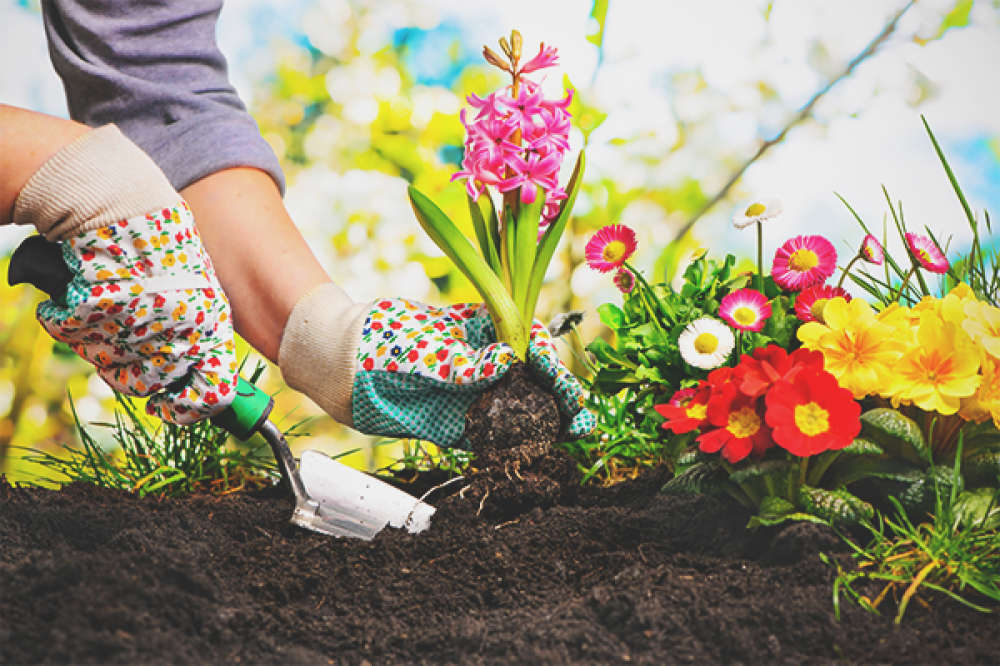Budding Garden Enthusiasts Welcome: Newbie Gardening Fundamentals and Beyond
Wiki Article
From Amateur to Eco-friendly Thumb: A Step-by-Step Journey Via the Art of Gardening

Understanding Your Horticulture Area
To begin your gardening trip, it is important to recognize the special features and limitations of your gardening room. Are there any type of certain difficulties you may face, such as poor dirt high quality or limited water availability? Recognizing these elements will certainly help you make notified choices about the types of plants that will certainly thrive in your area.Take into consideration the size of your gardening location. If you have a tiny space, you may require to concentrate on container gardening or vertical horticulture to optimize your expanding area. On the other hand, if you have a big room, you have the deluxe of planting a variety of plants and producing various areas within your yard.
If your space is shaded, you can opt for shade-loving plants like hostas or ferns (newbie gardening). If your room obtains complete sunlight, you can expand a vast array of plants, consisting of natural herbs, veggies, and blossoms.
Finally, think about any kind of restrictions or challenges details to your area. If your soil quality is inadequate, you might need to amend it with garden compost or select plants that are tolerant of less-than-ideal problems. If water is scarce, you can choose drought-tolerant plants or carry out water-saving methods like mulching.
Selecting the Right Plants for Your Yard
Select plants that are appropriate to your yard's special conditions and your individual preferences. When picking plants for your garden, it is very important to take into consideration elements such as sunshine, soil kind, and climate. Take an appearance at the amount of sunshine your garden obtains throughout the day. Some plants flourish completely sun, while others favor partial or also complete shade. Take into consideration the soil key in your garden also. Some plants like well-drained dirt, while others flourish in clay-like or moist dirt. Additionally, consider the environment in your area. Some plants are much better matched for completely dry and hot environments, while others can withstand chillier temperature levels.One more vital aspect to think about is your individual preference. Do you favor a garden full of vivid blossoms, or are you more curious about expanding herbs and vegetables? Consider the objective you desire your yard to serve and the aesthetic you intend to accomplish. It's likewise worth taking into consideration the maintenance level of the plants you choose. Some plants require more care and interest, while others are a lot more low-maintenance.
Preparing the Dirt for Growing
First, analyze the problem of your dirt to determine if any improvements or amendments are needed. The top quality of your dirt is critical for the success of your yard. Beginning by inspecting the structure of the soil. Is it sandy, loamy, or clayey? Sandy soil drains pipes promptly, while clayey dirt maintains water. Loamy soil is the excellent balance between the two. Next off, inspect the pH degree of your dirt. The majority of plants like a somewhat acidic to neutral pH, around 6.0 to 7.0. You may need to readjust it utilizing soil modifications such as lime or sulfur if your dirt is as well acidic or alkaline. Additionally, you should take into consideration the vitamins and mineral material of your soil. Conduct a soil examination to figure out if any type of essential nutrients are doing not have. This will help you determine which plant foods or raw material to add. Last but not least, make certain that your dirt is well-draining. Badly drained dirt can result in waterlogged origins and various other plant wellness problems. Boost water drainage by adding organic issue like compost or peat moss if required. By assessing and making needed amendments to your soil, you can develop an optimal setting for your plants to thrive.Nurturing and Maintaining Your Yard
As soon as you have prepared the dirt, it's time to obtain your hands unclean and start nurturing and preserving your yard. The trick to a successful yard corresponds treatment and attention. Watering is essential, specifically during droughts. Make certain to water your plants deeply, enabling the water to pass through the soil and reach the origins. Regular weeding is also essential to keep your yard devoid of undesirable plants that compete for nutrients and space. Take out any weeds, making sure to remove their roots to stop them from coming back. Furthermore, it's necessary to offer appropriate nourishment for your plants. Take into consideration making use of natural plant foods or garden compost to enhance the soil and promote healthy growth. Pruning is another important job to maintain your yard looking cool and motivate much better airflow and sunlight penetration. Cut off any kind of broken or dead branches to preserve the general health of your plants. Be on the search for illness and bugs. Regularly inspect your plants for any kind of indicators of invasion or illness and take prompt activity to stop more damage. By adhering to these nurturing and maintenance practices, you will make sure a growing and beautiful yard.Troubleshooting Common Gardening Issues
To resolve typical horticulture issues, beginning by identifying the issue and taking immediate activity. Among the most usual issues garden enthusiasts face is bugs. If you notice eaten leaves or plants that are wilting for no noticeable reason, you might have a pest invasion. Evaluate your plants closely for indications of pests or other insects. Eliminate them by hand or make use of organic insect control techniques if you detect any. Another usual trouble is nutrient deficiency. They might not be getting sufficient nutrients if your plants have actually yellow or stained fallen leaves. Consider fertilizing your soil or adding garden compost to improve its nutrition content. Overwatering is another issue that can harm your plants. If you see waterlogged soil or wilting in spite of adequate watering, you might be overwatering. Readjust your watering routine as necessary and guarantee proper drain. Lastly, disease can also affect your yard. It can be an indication of illness if you see areas, mold, or uncommon development on your plants. Eliminate impacted plants and treat the remaining ones with natural fungicides or pesticides. By quickly attending to these common issues, you can make certain the health and wellness and success of your garden.Conclusion
Congratulations! You have actually successfully finished the journey from newbie to green thumb in the art of gardening. By recognizing your gardening room, selecting the right plants, preparing the soil, and supporting your yard, you have gotten rid of common gardening concerns like a pro. Now, armed with expertise and experience, you prepare to take pleasure in the elegance and abundance of your prospering yard. Maintain the excellent job and remain to cultivate your eco-friendly thumb!
When choosing plants for your yard, it is vital to think about elements such as sunshine, soil type, and environment. Some plants choose well-drained dirt, while others flourish in wet or clay-like soil (newbie gardening). By recognizing your gardening area, choosing the right plants, preparing the dirt, and supporting your yard, you have conquered common gardening problems like a pro
Report this wiki page